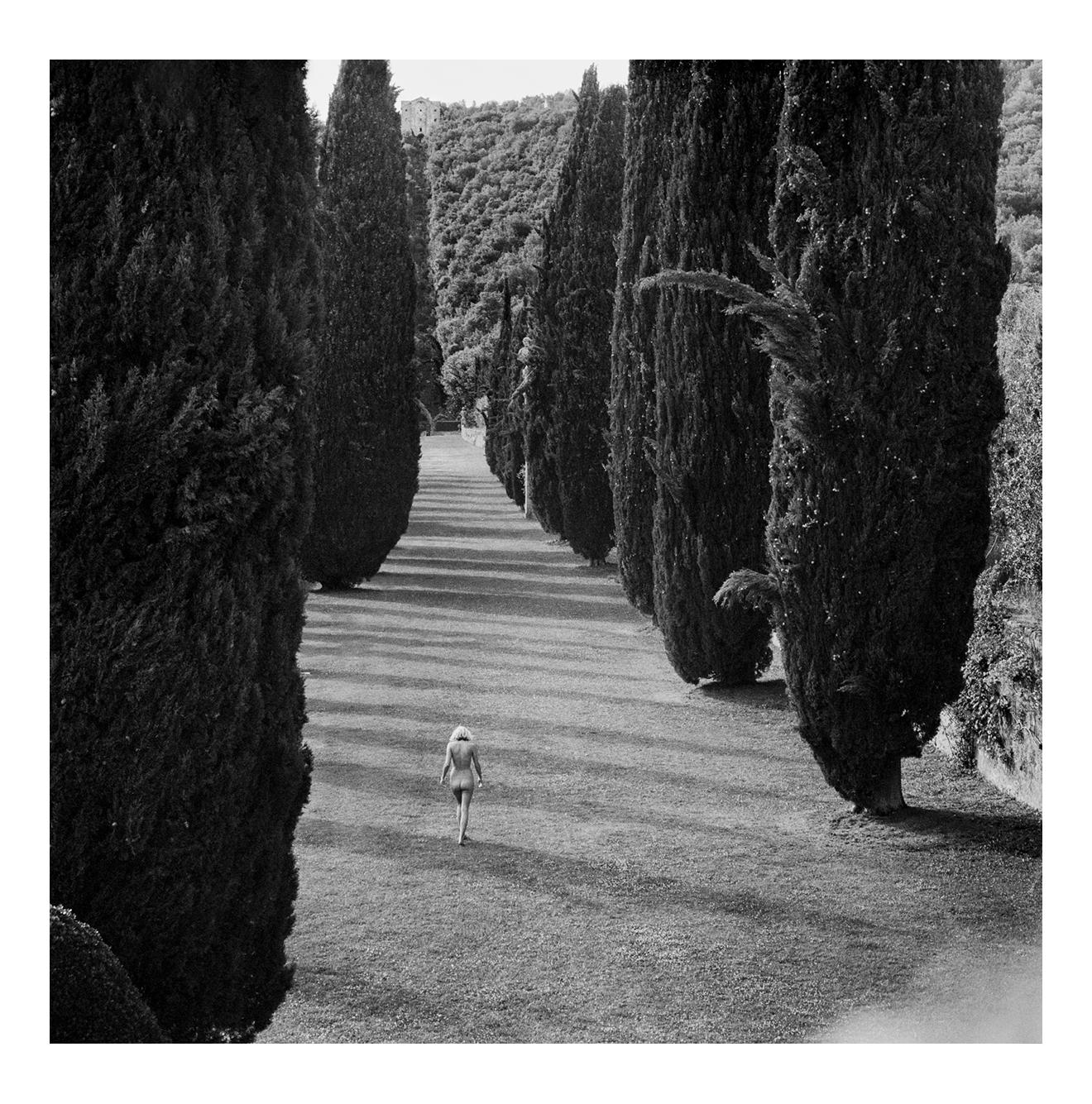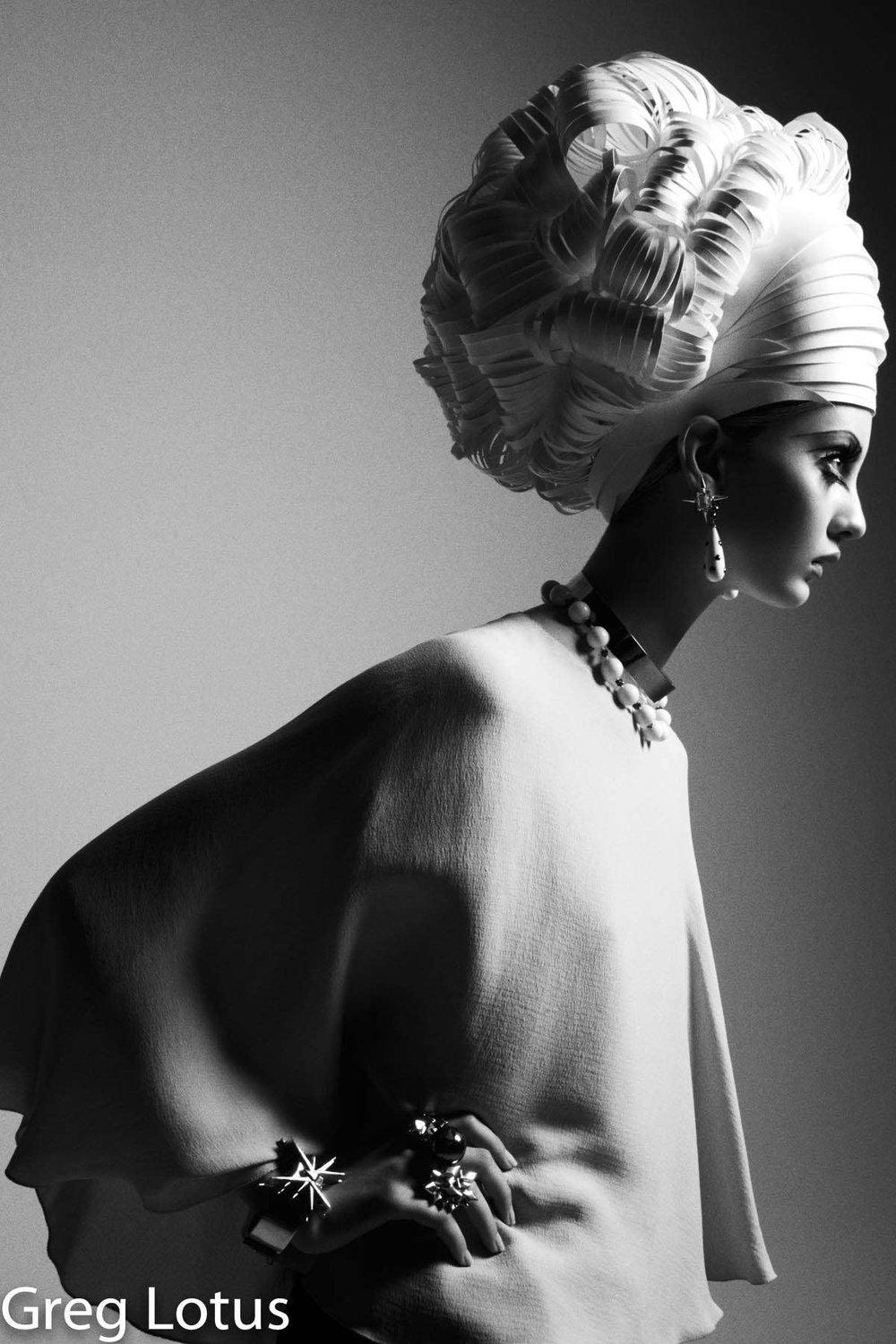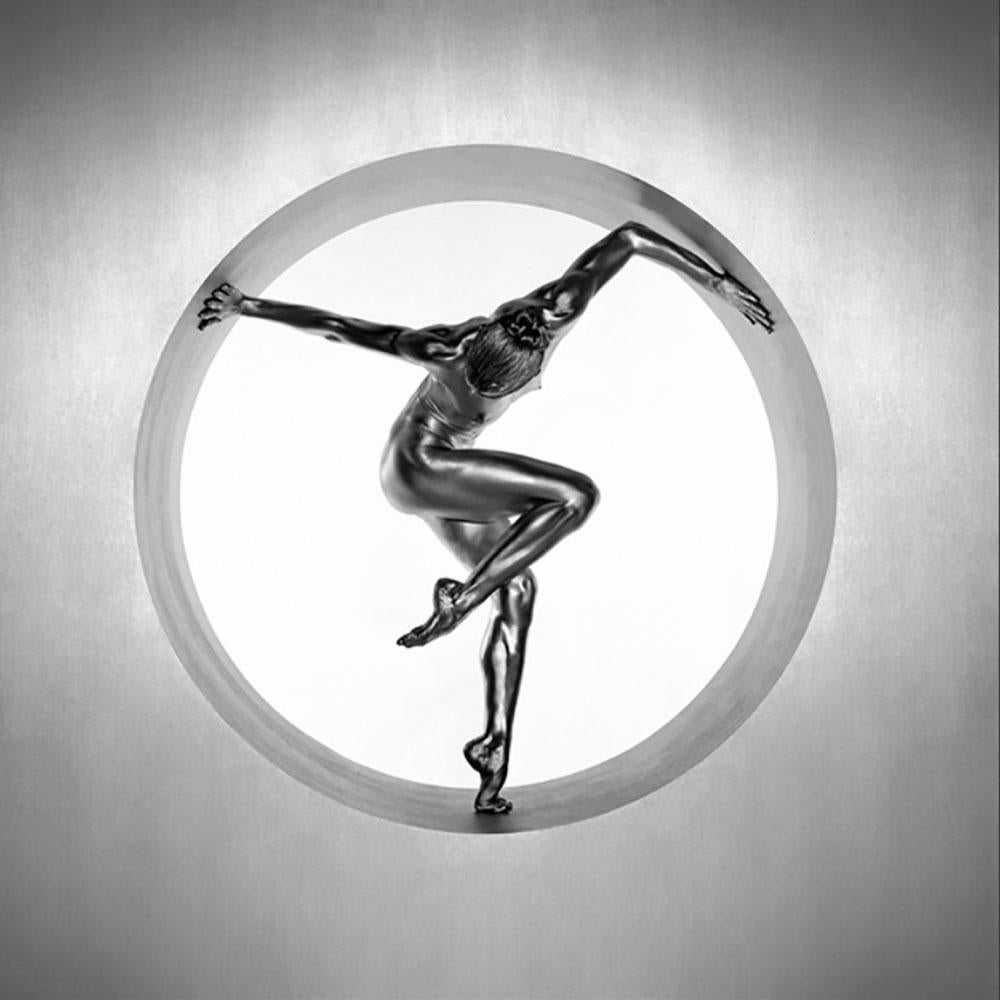Items Similar to Les Acrobates III. Limited Edition Photograph
Want more images or videos?
Request additional images or videos from the seller
1 of 8
Uwe OmmerLes Acrobates III. Limited Edition Photograph1995
1995
About the Item
Les Acrobates III
H 35.5 in. x 27.5 in. W
Edition 6
Unframed
Les Acrobates Series
This series was part of a calendar, and pays tribute to the art of the circus and its artists.
_______________________________
Born in Bergisch-Gladbach, Germany, Uwe Ommer became fascinated with photography at a young age. Initially sparked by his interest in photographing birds, he received his first camera at age 14 and began experimenting with his limited equipment. By the time Ommer was 18, he had given up on birds but was improving his skills as a photographer. He began working as an apprentice in a camera shop and soon picked up side projects for local papers, shooting everything from car accidents to weddings, when staff photographers were unavailable.
In 1962, Ommer was awarded the first Deutscher Jugend Photo Preis (German Youth Photo Prize) at Photokina 1962 for his photograph of children playing soccer. The following year, he left for Paris (for only one year to learn French, he insisted) and began working as an assistant to advertising photographer Jean Pierre Ronzel. While Ommer did perfect his French, he never did leave Paris.
In 1966 he opened his own photography studio, primarily shooting fashion and advertising photos for small women’s magazines. Quickly gaining respect for his work in Paris, Ommer began showing in local galleries and eventually published his first book. In 1995, Ommer drastically changed gears and decided to embark on a project, unlike anything he had ever done before – a project, unlike anything anyone had ever done before. As a personal challenge, he set out the following year to document all types of families on every continent at the turn of the millennium. With a Landrover, Rolleiflex camera, portable studio, one assistant, many maps, many guidebooks (but without a phone, a GPS system, any spare parts or a watch) Ommer visited 130 countries in the following four years, interviewing and photographing over 1000 families.
Returning to Paris in 2000, Ommer had a collection of 1 251 photographs illustrating the “family,” in its current and diverse state. Ommer had met and exceeded the tremendous challenge he set forth for himself four years before. He had realized his dream with a collection of photographs proving, despite differences in culture, geography, language, or religion, the family remains one of the most remarkable and universal institutions for humans worldwide.
Taschen published the catalog titled “1000 Families” in 2000 when the photographs were first exhibited to the public in Cologne, Germany in September at Photokina 2000. Since then, the exhibition has toured the world and has received praise for the scope and beauty of the photographs, and their simple message of commonality.
In 2002, Uwe Ommer was awarded an Honorary Fellowship to the Royal Photographic Society for the impact of his lifetime of work.
- Creator:Uwe Ommer (1943)
- Creation Year:1995
- Dimensions:Height: 35.5 in (90.17 cm)Width: 27.5 in (69.85 cm)Depth: 0.1 in (2.54 mm)
- Medium:
- Movement & Style:
- Period:
- Condition:
- Gallery Location:Miami Beach, FL
- Reference Number:1stDibs: LU45336425682
About the Seller
4.9
Recognized Seller
These prestigious sellers are industry leaders and represent the highest echelon for item quality and design.
Established in 2000
1stDibs seller since 2016
225 sales on 1stDibs
Typical response time: 1 hour
- ShippingRetrieving quote...Ships From: Noailles, France
- Return PolicyThis item cannot be returned.
More From This SellerView All
- Shanghai #6, Nude Portrait Black and White PhotographBy David JayLocated in Miami Beach, FLShanghai #6 by David Jay 40 in. H x 60 in. W Archival Pigment Print Edition of 5 2012 UNFRAMED Shanghai is a series by photographer David Jay exclusive to Art Design Project. Jay’s p...Category
2010s Contemporary Black and White Photography
MaterialsPhotographic Paper, Archival Pigment
- Bottle and Cry me a river. Belem do para. Brazil.By Guilherme LicurgoLocated in Miami Beach, FLBOTTLE and CRY ME A RIVER, BELÉM DO PARÁ by Guilherme Licurgo Archival Pigment Print Overall size: 35 in. H x 46 in. W Individual size: 35 in. H x 23 in. W Both works are limited Edition of 10 + 1AP Other sizes are available. All Prices are quoted as "initial price". Please note that prices and availability may change due to current sales. ____________ Guilherme Licurgo was born in Rio de Janeiro in 1983 and is currently residing and working in São Paulo, Brazil. Invited to model for Terry Richardson for his book, "Terry Richardson Rio Cidade Maravilhosa" in 2008, Guilherme went on to study Photography at the Panamericana School of Art. He discovered his real passion behind the lens, creating images. He has been working as a photographer ever since. He has worked for many Brazilian and International brands/ magazines, including Lancaster Paris, Architecture Beauty Culture Design, Roberto Cavalli, Wonderland, Martha Graham Dance Company, EMI Records, Greenpeace, PIRELLI, at PIRELLI CALENDAR...Category
2010s Contemporary Black and White Photography
MaterialsPhotographic Paper, Black and White, Archival Pigment
- Invacuo Project #32. B&W Portrait inspired by the Gezi Park resistance movementBy Koray ErkayaLocated in Miami Beach, FLInvacuo Project #32, 2016 by Koray Erkaya From the series of Invacuo Project Hahnemühle Photo Matt Fibre Duo 210 Image size: 16 in. H x 24 in. W (40 cm H x 60 cm W) Edition of 10 All sizes signed, titled, dated, and numbered on artist label verso All Prices are quoted as "initial price". Please note that prices and availability may change due to current sales. _____________________ JAZZ AND GAS Joyful humor characteristic of the pro-democracy environmentalist Gezi Park protests in June 2013. People of all ages, students, writers, artists, actors, musicians, LGBT activists, Anti-Capitalist Muslims, Marxists, Anarchists, Kurdish and Turkish nationalists were peacefully together in the heart of modern Istanbul: Taksim Square. Then the police attacked with tear gas and their usual equipment. But if they use uneven brutal force, then we use uneven intelligence and creativity: “We are fair: Their gas is fresh air.” Such sarcastic slogans multiplied echoing the positive, hopeful, unyielding and determined character of our jazz-like plural harmony. If Sultanahmet Square is the heart of Classical Istanbul with its Byzantine and Ottoman heritage, Taksim Square represents the modern city: the central statue representing the national liberation war and the formation of the Turkish Republic, Gezi Park, Ataturk Cultural Centre, big hotels, and the historic Istiklal (Independence) Street. Eyes shed tears not only because we laughed due to high-quality satirical slogans but also because of the harmful gas and the deaths of several youngsters. Numerous citizens lost an eye or arm. Thanks to international media coverage, the inspiring Gezi Park resistance (or “June Movement”) in Turkey drew attention all over the world -while the pro-government media kept silent. Whether on purpose or not, tear gas –and its canisters at close range- took several lives. Don’t let anybody fool you: Tear gas may kill. And it did. Though “as a nation” we had been used to gas in previous demonstrations, one point was unique: The whole city was gassed. Babies, old people, and citizens with asthma suffered in their homes. Before the police attack, maybe most of the young protesters were “merely” environmentalists without a major political orientation. Tear gas brutality transformed most of them into political activists. Since that June, our lungs, souls, and future have been full of that gas. Tear gas has been used not only in Turkey but in many other countries as well –since the 1990s. We tend to think that “Every soul shall taste it,” –sounds like a statement from a holy book. The situation is unacceptable: A child on the way to get bread for breakfast may die –in fact, be killed by the police using tear gas without proper concern and care. Tear gas is a chemical weapon. It’s vital to comprehend that. The marketing is well-phrased but misleading: “Made from fruit and vegetables, wholly organic.” But when it is used at close range, its metal canister becomes a bullet. Fifty years ago, in the late 1960s, 90 countries signed a petition against the usage of tear gas. Our country signed the 1997 Convention on Chemical Weapons, which states that tear gas is considered to be a chemical weapon when it is used in closed places, at close range or in a crowd. Despite this, it has been used time and again in Brasil, Chile, Egypt, Germany, Gaza, Iraq, Ireland, Israel, Panama, the Philippines, South Korea, UK, USA, and Vietnam. The Association of Turkish Medical Doctors and the Initiative Against Tear Gas have been working and reacting diligently on this issue. “But the label says it’s harmless,” say some. But the firms that produce gas bombs put labels according to the demands of governments. Are you Shocked? Global trade has priority over humanitarian concern. But why this introduction? Don’t we all know all these things? We certainly do, but the “agenda” changes so fast that our knowledge does not find time to unite with our action in order to change the ongoing chain of events. Enter the arts. With the mission of contributing to collective memory, Artist Koray Erkaya creatively documents experience. In his new photographic art series, Erkaya revolts against individual and social de-sensitization. In order to address the memory and to increase awareness, he uses “gas” against everyone –without discrimination. He tests his models with gas in the specifically prepared labyrinth made of mirrors. But of course, the gas he uses is not one of the types of tear gas labeled OC, CS or CN. In any case, the violence the people suffer is not limited to the content of the gas. When he started his voyage to display the violence, loneliness, nakedness, helplessness, the spiritual and physical isolation of women, children, gays, transsexuals -all the humiliated people under some form of gas, Erkaya began working with models from various nations in Istanbul. Now he is on his way to show that this issue is a problem for all who live on the same planet. When we see ourselves in the eyes of the models in the mirrors...Category
2010s Contemporary Black and White Photography
MaterialsArchival Pigment, C Print
- Don't Tell Mamma #10, Black and white nude photographBy Koray ErkayaLocated in Miami Beach, FLDon't Tell Mamma #10, 1994-2010 by Koray Erkaya From the series of Don't Tell Mamma Hahnemühle Photo Matt Fibre Duo 210 Paper Deckled Edge Image size: 24 in. H x 16 in. W (60 cm H x...Category
2010s Contemporary Black and White Photography
MaterialsBlack and White, Archival Pigment
- Don't Tell Mamma #7. Black and white nude photographBy Koray ErkayaLocated in Miami Beach, FLDon't Tell Mamma #7, 1994-2010 by Koray Erkaya From the series of Don't Tell Mamma Hahnemühle Photo Matt Fibre Duo 210 Paper Deckled Edge Image size: 24 in. H x 16 in. W (60 cm H x ...Category
2010s Contemporary Black and White Photography
MaterialsBlack and White, Archival Pigment
- Don't Tell Mamma #8. Black and white nude photographBy Koray ErkayaLocated in Miami Beach, FLDon't Tell Mamma #8, 1994-2010 by Koray Erkaya From the series of Don't Tell Mamma Hahnemühle Photo Matt Fibre Duo 210 Paper Deckled Edge Image size: 34 in. H x 34 in. W (85 cm H x ...Category
2010s Contemporary Black and White Photography
MaterialsBlack and White, Archival Pigment
You May Also Like
- Villa Cetinale, Siena Italy, May 2012By Jonathan BeckerLocated in New York, NYVilla Cetinale, Italy, May 2012 A moment at a storied property where centuries of history pile on Photographed by Jonathan Becker Contemporary 44" x 4...Category
2010s Contemporary Black and White Photography
MaterialsArchival Pigment
- Wagon WheelBy Greg LotusLocated in New York City, NYGreg Lotus Wagon Wheel, 2005 Fashion Photography Greg Lotus is an American fashion photographer based between Miami and New York. His work can be found re...Category
2010s Contemporary Nude Photography
MaterialsPlexiglass, Archival Pigment
- Paper DoBy Greg LotusLocated in New York City, NYGreg Lotus Paper Do, 2011 Fashion Photography Greg Lotus is an American fashion photographer based between Miami and New York. His work can be found regularly in the pages of Italia...Category
2010s Contemporary Nude Photography
MaterialsPlexiglass, Archival Pigment
- Nemesis (Argentum series by Guido Argentini)By Guido ArgentiniLocated in New York City, NYGUIDO ARGENTINI ARGENTUM series 40x40in ed.18 Archival Pigment Print Mounted and Framed Also available in 48x48in and 60x60in. Limited edition signed print by Guido Argentini. Gu...Category
2010s Contemporary Black and White Photography
MaterialsArchival Pigment
- Belisama (Argentum by Guido Argentini)By Guido ArgentiniLocated in New York City, NY40x40in ed.18 Archival Pigment Print UNFRAMED Also available in 48x48in and 60x60in. Limited edition signed print by Guido Argentini. Guido Argentini was born in Florence, Italy in 1966. He lives and works in between Los Angeles, Florence and Rio. Argentini blends the erotic and artistic in his photographs. Taking the ancient Greek concept of Eros as a starting point, Argentini explores the nature of desire. His series span glamorous old Hollywood – inspired color photographs to black-and-white boudoir shots. Argentum by Guido Argentini evokes the luminous polished planes of the work of Brancusi and the verve of Degas’ ballet sketches...Category
2010s Contemporary Black and White Photography
MaterialsArchival Pigment
- Aphrodite (Argentum by Guido Argentini)By Guido ArgentiniLocated in New York City, NY40x40in ed.18 Archival Pigment Print UNFRAMED Also available in 48x48in and 60x60in. Limited edition signed print by Guido Argentini. Guido Argentini was born in Florence, Italy in 1966. He lives and works in between Los Angeles, Florence and Rio. Argentini blends the erotic and artistic in his photographs. Taking the ancient Greek concept of Eros as a starting point, Argentini explores the nature of desire. His series span glamorous old Hollywood – inspired color photographs to black-and-white boudoir shots. Argentum by Guido Argentini evokes the luminous polished planes of the work of Brancusi and the verve of Degas’ ballet...Category
2010s Contemporary Black and White Photography
MaterialsArchival Pigment





